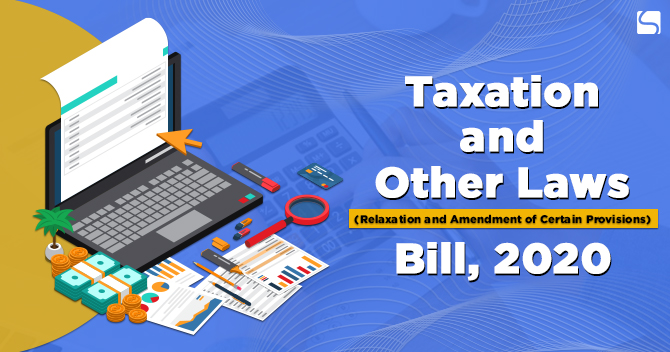Form ITR 3: Latest Updates and Procedure to File Online
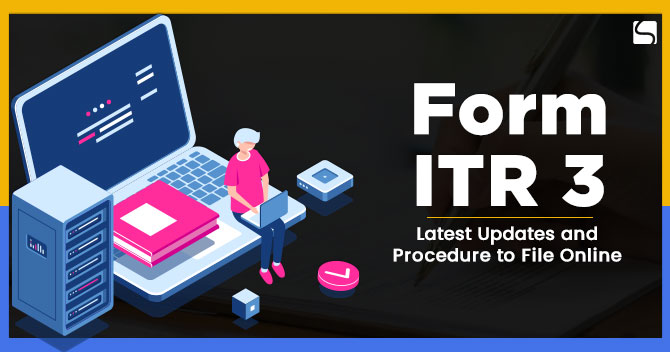
Shivani Jain | Updated: Sep 05, 2020 | Category: Income Tax
The term “Form ITR 3” denotes an Income Tax Return (ITR) filed by the Individuals or HUFs (Hindu Undivided Families) who are earning income under the head of PGBP (Profit and Gain from Business or Profession). However, it does not apply to individuals who are filing Form ITR 2.
In this blog, we will talk about the concept of Form ITR 3, together with the Latest Updates and Procedure to File it Online.
Table of Contents
Who are all Eligible to File Form ITR 3?
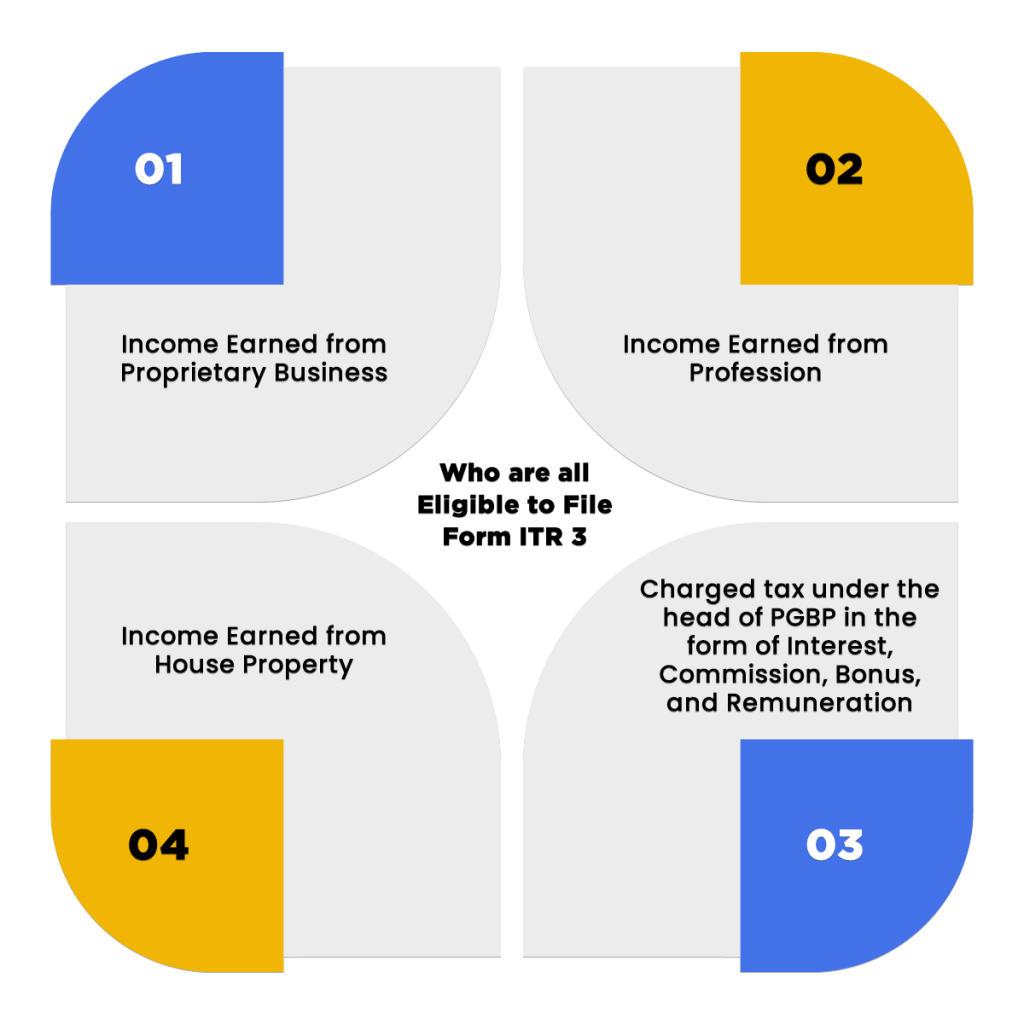
The individuals who are earning income from any of the category given below are eligible to file ITR Form 3:
- Income Earned from Proprietary Business;
- Income Earned from Profession;
- Income Earned from House Property;
- Any person who has been charged tax under the head Profit and Gain from Business or Profession in the form of Interest, Commission, Bonus, and Remuneration.
Who are all Not Eligible to File Form ITR 3?
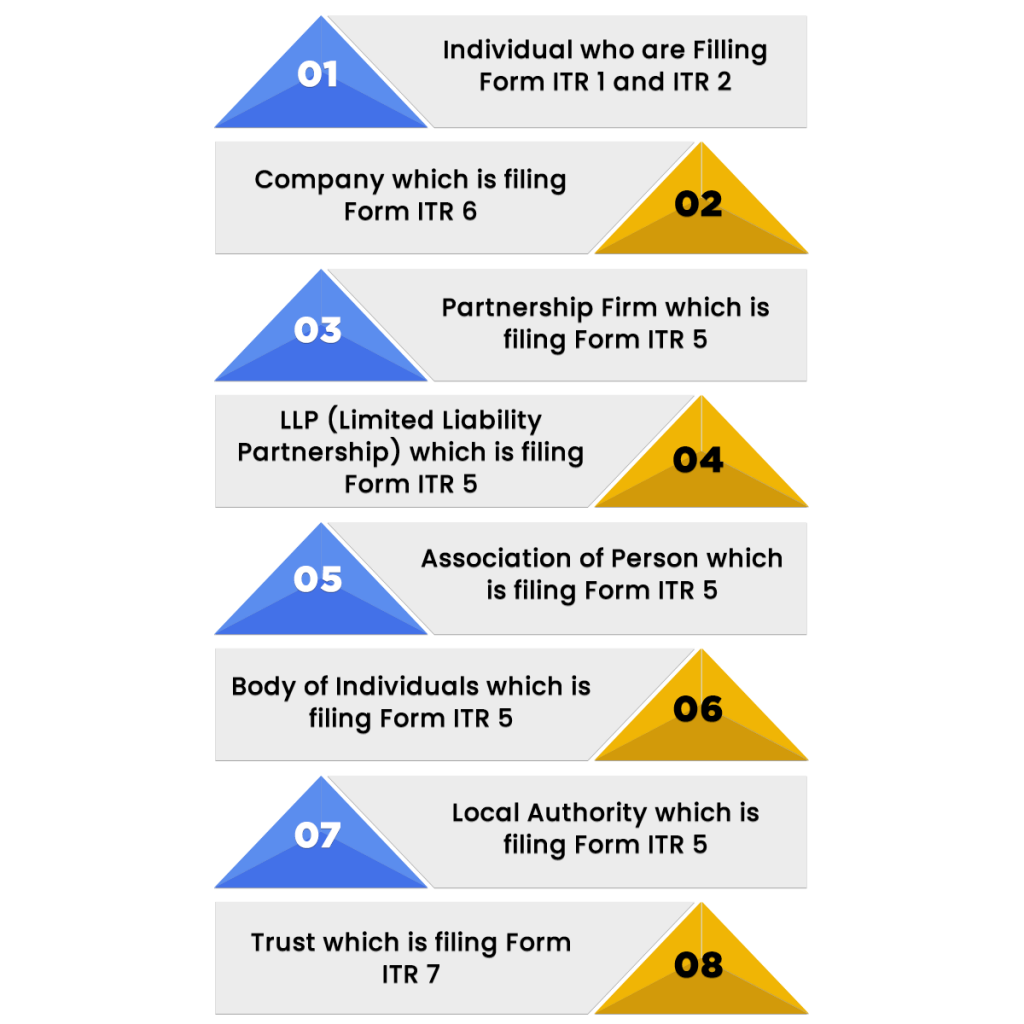
The individuals who are falling under any of the category given below are not eligible to file ITR Form 3:
- Individual who are filling Form ITR 1 and ITR 2;
- Company which is filing Form ITR 6;
- Partnership Firm which is filing Form ITR 5;
- LLP (Limited Liability Partnership) which is filing Form ITR 5;
- AOP (Association of Person) which is filing Form ITR 5;
- BOI (Body of Individuals) which is filing Form ITR 5;
- Local Authority which is filing Form ITR 5;
- Trust which is filing Form ITR 7;
Latest Updates on Form ITR 3
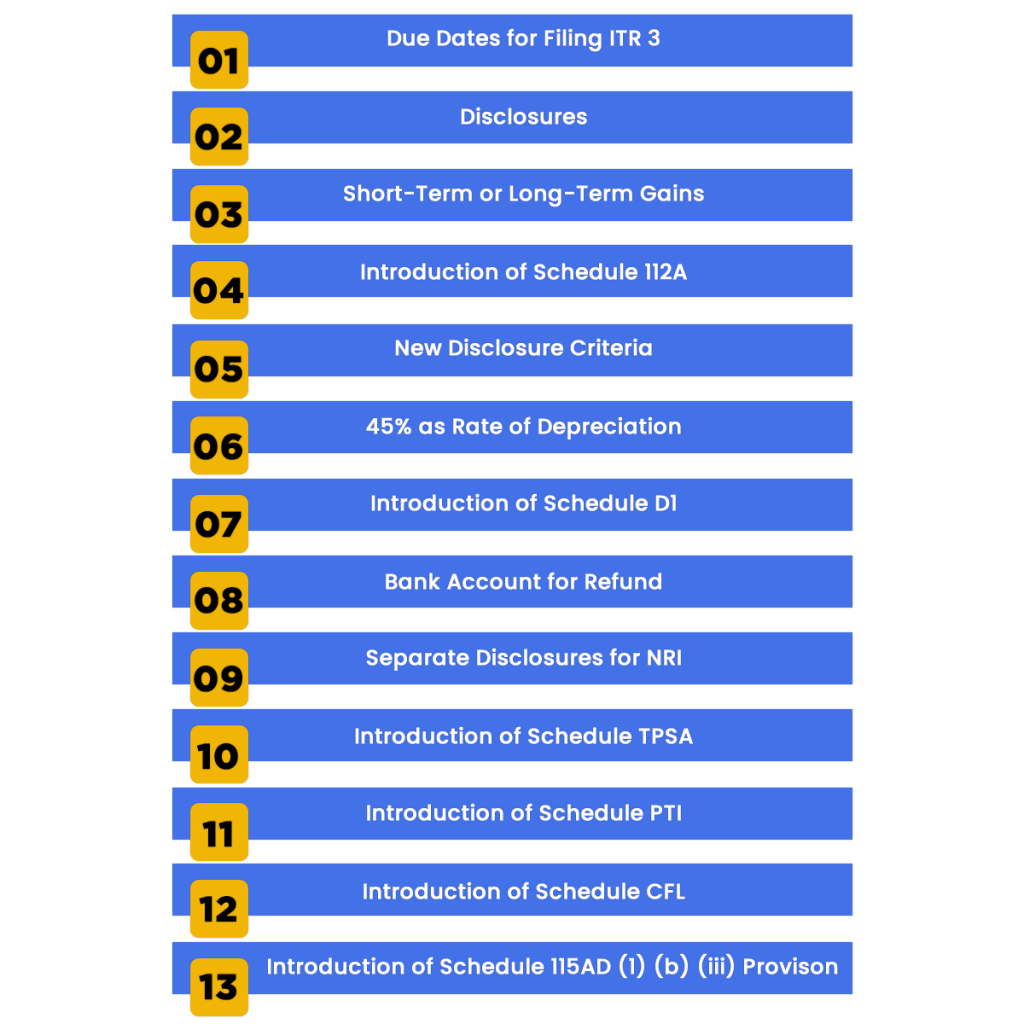
The latest updates on ITR Form 3 are as follows:
Due Dates for Filing ITR 3
The change in the due dates for filing ITR 3 of the A.Y. 2020-2021 can be summarised as follows:
- For Individuals, the date has been extended to 30.11.2020;
- For Businesses, the date has been extended to 30.11.2020;
Disclosures
Now, the Taxpayer needs to disclose the details regarding the following:
- If the Cash Deposits are more than Rs 1 crore in the Current Bank Account;
- If the Expenditure incurred on Foreign Travel is more than Rs 2 lakh;
- If the Expenditure incurred on Electricity is more than Rs 1 lakh;
Moreover, if a person is either a director in a company or holds “Unlisted Equity Investments”, then the “type of company” should be disclosed as well.
Short-Term or Long-Term Gains
In the case of a Short-term or Long-term Capital Gain from the Sale of Building, Land, or Both, the taxpayers need to provide the details of the Buyer as follows:
- Name;
- PAN Card;
- Aadhar Card;
- Sharing Percentage of Ownership; and
- Address;
Introduction of Schedule 112A
A separate schedule, named schedule 112A, has been made for the calculation of the Long-term Capital Gains on the Sale of Shares and Business Units, which are liable to STT (Securities Transaction Tax).
New Disclosure Criteria
Now, the Form ITR 3 has been amended with a new disclosure criteria concerning declaring Income under the Presumptive Income Scheme, such as 44AE/ 44B/ 44BB/ 44AD/ 44ADA/ 44BBA/ 44BBB.
45% as Rate of Depreciation
Under the head of “Depreciation on Plant and Machinery”, an option of New Rate, i.e., 45% has been added.
However, such a rate does not apply to the assets on which full “capital expenditure” is allowable as a deduction.
Introduction of Schedule D1
Under this section, the taxpayer needs to submit details and information regarding every donation, deposit, and investments made by him/her till 31.07.2020.
Further, these investments are eligible to claim deduction under chapter VI-A of the Income Tax Act for the Financial Year 2019-2020.
Bank Account for Refund
As per the amendment made in the Form ITR 3, the taxpayer can now choose more than one bank account to claim a refund.
Further, the Centralised Processing Centre (CPC) will credit the amount of refund in one of the bank accounts after duly processing the return.
Separate Disclosures for NRI
As per the new form, the applicant who is an NRI (Non Resident Indian) and is not having a Bank Account in India, but wants to claim a Refund of Income Tax, needs to provide the details as follows:
- Name of the Bank;
- Name of the Country;
- SWIFT Code;
- IBAN (International Bank Account Number);
Introduction of Schedule TPSA
This section of the form will include details of the Tax on Secondary Adjustments according to section 92 CE (2A);
Introduction of Schedule PTI
This new schedule will include the details as follows:
- Investments covered under section 115UA and 115UB;
- Classification of Income as follows:
- Current Year Income;
- Share in the Current Year Loss distributed by the Investment Fund;
- Net Income or Loss;
Introduction of Schedule CFL
The term CFL stands for Carry Forward Losses. Under this head, the taxpayer needs to provide details regarding the Loss Incurred in the 2 columns, named as follows:
- Normal Loss;
- PTI
Introduction of Schedule 115AD (1) (b) (iii) Proviso
This section deals specifically with the NRIs, who have been engaged in the Sale of Shares, or Unit of Equity-oriented Fund, or Unit of a Business on which Securities Transaction Tax has been paid under section 112 A.
Methods of Filing Form ITR 3
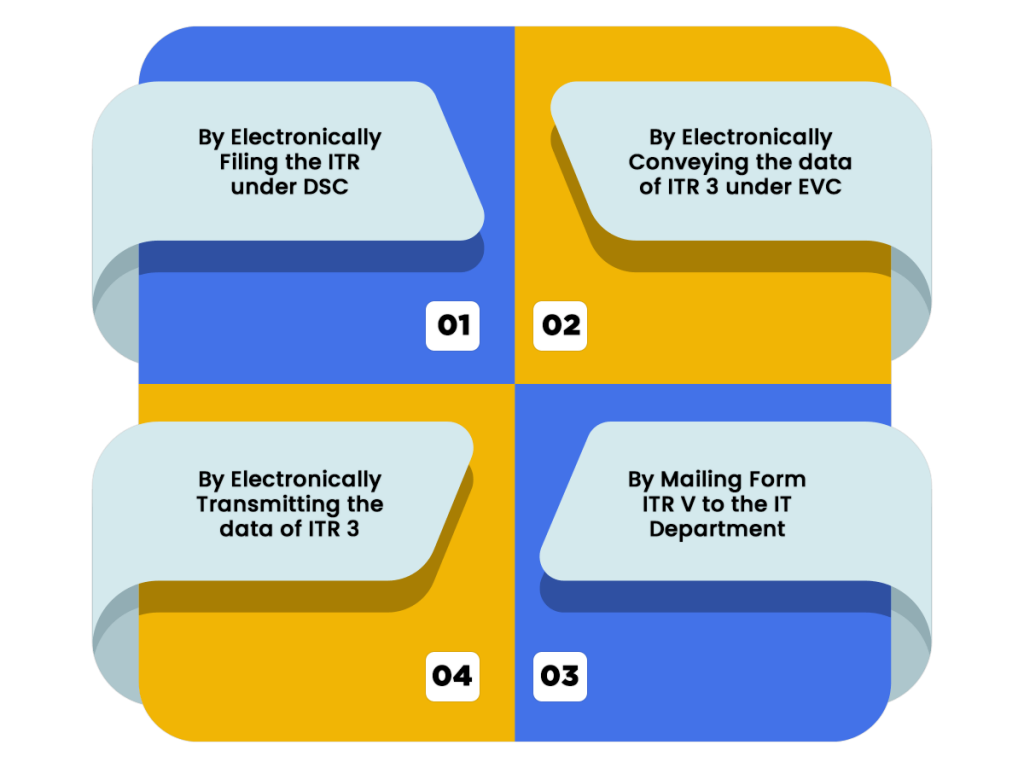
The different methods of Filing Form ITR 3 are as follows:
- By Electronically Filing the ITR under DSC. However, this method is beneficial for those taxpayers who want to obtain a Tax Audit.
- By Electronically Conveying the data of ITR 3 under EVC (Electronic Verification Code);
- By Electronically Transmitting the data of ITR 3, followed by the Submission of Verification Return;
- By Mailing Form ITR V to the IT Department. For this method, the taxpayer must first complete the acknowledgment in Form ITR-V to file Form ITR 3.
Structure of Form ITR 3 for A.Y. 2020-2021
There are 4 main heads in the structure of Form ITR 3, which are as follows:
- PART A;
- Schedules;
- PART B;
- Verification;
Part A
The sections under Part A of the Form are as follows:
Part A- GEN
It includes all the General Details and Nature of Business.
Part A- BS
It will include the Balance Sheet as of 31.03.2020, of the Income Earned under the head of PGBP.
Part A- Manufacturing Account
All the Details concerning the Manufacturing Account for the F.Y. 2019-2020 are covered under this head.
Part A- Trading Account
All the Details concerning the Trading Account for the F.Y. 2019-2020 are covered under this head.
Part A- P&L
All the Details concerning the Profit and Loss Account for the F.Y. 2019-2020 are covered under this head.
Part A- OI
It will include all the remaining or other information. However, it is optional for the taxpayer to fill this head if in case he/she is not liable for Tax Audit under section 44AB.
Part A- QD
It will include all the quantitative information. However, it is optional for the taxpayer to fill this head if in case he/she is not liable for Tax Audit under section 44AB.
Schedules
The sections included under the head Schedules are as follows:
- Schedule S: Computation of Income Earned under the Head “Salaries”;
- Schedule HP: Computation of Income Earned under the Head
“Income from House Property”; - Schedule BP: Computation of Income Earned from “Business or Profession”;
- Schedule DPM: Computation of Depreciation Charged on Plant and Machinery under the Income Tax Act;
- Schedule DOA: Computation of Depreciation Charged on Other Assets under the Income Tax Act;
- Schedule DEP: Summary of Depreciation Charged on all the Assets under the Income Tax Act;
- Schedule DCG: Computation of the Deemed Capital Gains on the Sale of the Depreciable Assets;
- Schedule ESR: Deduction under Section 35 of the Income Tax Act (Expenditure on Scientific Research);
- Schedule-CG: Computation of Income Earned under the Head “Capital Gains”;
- Schedule 112A: Details of the Capital Gains where section 112 A is applicable;
- Schedule 115AD (1) (iii) Proviso: For Non Residents, Details of the Capital Gains where section 112 A is applicable;
- Schedule OS: Computation of the Income Earned under the Head “Other Sources”;
- Schedule CYLA-BFLA: Statement of the Income after Setting off of the Losses of the Current Year and Statement of Income after Setting off of the Unabsorbed Loss Carried forward from the previous years;
- Schedule CYLA: Statement of the Income after Setting off of Losses of Current Year;
- Schedule BFLA: Statement of the Income after Setting off of the Unabsorbed Loss Carried forward from the previous years;
- Schedule CFL: Statement of the Losses to be Bought Forward to Future Years;
- Schedule UD: Statement of the Unabsorbed Depreciation;
- Schedule ICDS: Effect of the “Income Computation Disclosure Standards” on Profit Earned;
- Schedule 10AA: Computation of the Deduction under section 10 AA;
- Schedule 80G: Statement of the Donations Capable for Deduction under section 80G;
- Schedule RA: Statement of the Donations to Research Associations etc, Capable for Deduction under section 35 (1) (ii) or 35 (1) (iia) or 35 (1) (iii) or 35 (2AA);
- Schedule 80 IA: Computation of the Deduction under section 80 IA;
- Schedule 80 IB: Computation of the Deduction under section 80 IB;
- Schedule 80 IC/ 80 IE: Computation of Deduction under section 80 IC/ 80 IE;
- Schedule VI A: Statement of the deductions (from the total income) under Chapter VI A;
- Schedule SPI-SI-IF: Income of the Specified Persons (Minor, spouse, etc) includable in the income of an Assessee, Income chargeable at the Special Rates, and info partnership firms in which Assessee is a partner;
- Schedule AMT: Computation of the AMT (Alternate Minimum Tax) Payable under Section 115JC;
- Schedule AMTC: Computation of the Tax Credit under section 115JD;
- Schedule SPI: Statement of income accruing to spouse/ minor child/ son’s wife or any other person or AOP (Association of Persons) to be included in the total income of the assessee in Schedules HP, BP, CG, and OS.
- Schedule SI: Statement of the Income which is chargeable to tax at the special rates;
- Schedule IF: Information concerning partnership firms in which Assessee is a partner;
- Schedule EI: Statement of the Income not included in the total income (exempt income);
- Schedule PTI: Pass through income details from an investment fund, or business trust as per section 115 UA, 115 UB;
- Schedule TPSA: Secondary Adjustment to transfer price as per section 92 CE (2A);
- Schedule FSI: Details of the income earned outside India and tax relief;
- Schedule TR: Statement of the tax relief claimed under section 90 or section 90 A or section 91;
- Schedule FA: Statement of the Foreign Assets and Income Earned from any source outside India;
- Schedule 5A: Information concerning the apportionment of income between spouses regulated by the Portuguese Civil Code;
- Schedule AL: Assets and Liabilities at the end of the year (applicable where the total income is more than Rs 50 lakhs);
- Schedule DI: Schedule of tax-saving investments or payments or deposits to claim deduction or exemption in the extended period from 01.04.2020 until 30.06.2020;
- Schedule GST: Information concerning Annual Turnover/ Gross receipt reported for GST;
Part B
The sections under Part B of the Form are as follows:
Part B TI
It deals with the Computation of Total Income.
Part B TTI
It deals with the Computation of Tax Liability on Total Income.
Verification
The last head is verification, under which a taxpayer claims that every detail and information provided by him/her is the best of his/her knowledge.
Procedure to file Form ITR 3
There are 2 ways of filing Form ITR 3, which are as follows:
- Offline Procedure;
- Online Procedure;
Offline Procedure to File Form ITR 3
The modes for Filing Income Tax Return 3 are as follows:
- By Furnishing the Income Tax Return (ITR) in a Physical Paper Format;
- By Furnishing a Bar-coded Return;
Online Procedure to File Form ITR 3
The steps involved in the procedure to file Form ITR 3 online are as follows:
Download the E-Form
Firstly, the applicant needs to download the E-form by visiting the official IT portal at http://www.incometaxindiaefiling.gov.in/home;
Fill in the Details
Now, the taxpayer requires to fill in details in different parts of the form.
Verification of Form
Under this step, the taxpayer needs to get his/her Form ITR 3 verified or authenticated in the ways as follows:
- By Getting it signed Digitally;
- By Validating the Form through Electronic Verification Code (EVC);
Submit the Form
Now, if the concerned taxpayer needs to submit his/her form online. Further, he/she will be sent an acknowledgment on the registered email id.
However, if he/she wants to send it manually by downloading it e-from the official portal, the concerned taxpayer is required to courier the same to the Income Tax Department’s CPC office, located Bangalore, within 120 days, commencing from the date of e-filing.
Moreover, it shall be pertinent to note that Form ITR 3 is an annexure less form, i.e., there is no need to attach any record or document.
Conclusion
Therefore, it will be correct to state that, nowadays, the government is working hard to benefit the taxpayers or assesses of all income levels in the mid of the COVID-19 crisis. Further, the same can again be proved by the fact that the due dates for Filing ITR Form 3 have been extended by the Central Government and Income Tax Department to 30.11.2020.
If still in dilemma, then visit our Income Tax Return Filing Service Page.
Performa of Form ITR 3 for the A.Y. 2020-2021
ITR-3_Notified_FormAlso, Read:Complete Guide to Income Tax Return Filing














